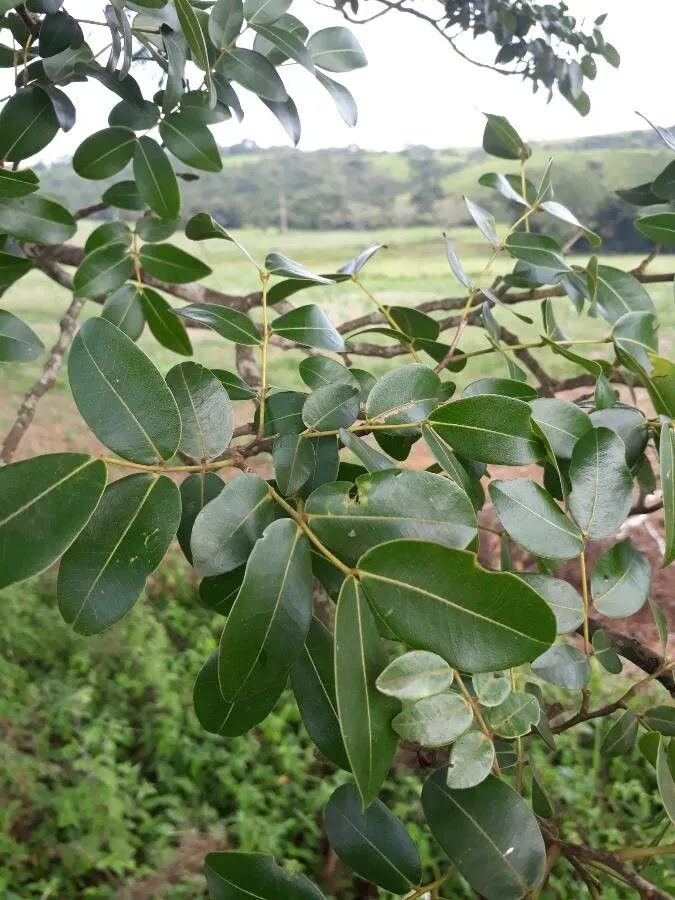
Author: Desf.
Bibliography: Mém. Mus. Hist. Nat. 7: 877 (1821)
Year: 1821
Status: accepted
Rank: species
Genus: Copaifera
Vegetable: Unknown
Observations: Guyana to Argentina (Misiones)
Copaiba, scientifically known as Copaifera langsdorffii, is a significant species within the Fabaceae family, renowned for its multitude of uses and historical relevance. This robust tree is predominantly found across a broad geographical range from Guyana to Argentina, particularly flourishing in regions like Misiones.
First identified and documented in 1821 by Desf. in “Mém. Mus. Hist. Nat.”, Copaiba has since captivated botanists and naturalists alike. Its resilience and adaptability to various environmental conditions have secured its place as a cornerstone species within its native habitats.
Copaiba is highly valued not only for its ecological presence but also for the unique oleoresin produced by its trunk. This oleoresin has been used traditionally for various medicinal purposes, capitalizing on its anti-inflammatory, antiseptic, and antimicrobial properties. Its therapeutic applications range from treating skin conditions and infections to promoting wound healing and reducing pain, showcasing its versatility.
Additionally, this tree contributes significantly to the ecosystem. As part of the Fabaceae family, it plays a crucial role in nitrogen fixation, enhancing soil fertility and supporting other plant life. The widespread canopy and extensive root system of Copaiba trees also aid in soil conservation and water regulation, thereby maintaining the health and stability of the ecosystems it inhabits.
Beyond its biological and ecological importance, the wood of Copaiba is also prized in local economies for its durability and workability, making it a favored material for furniture and construction.
In summary, Copaifera langsdorffii, or Copaiba, is a vital species that exemplifies the interconnectedness of medicinal, ecological, and economic benefits. Its significance from Guyana to Argentina reiterates its pivotal role in both sustaining biodiversity and supporting human communities.
Deu: copaiva
Eng: langsdorf’s copaifera, copaiba, brazilian diesel tree
Fra: copahu
Por: copaíba, pau-d’óleo, capaíba
Swe: röd kopaiva
En: Copaiba, Langsdorf’s copaifera, Brazilian diesel tree
Bn: ডিজেল গাছ
Fr: Copahu, Copaïer
De: Copaiva
Ml: ഡീസൽ മരം
Pt: Pau-de-óleo, Copaíba, Pau-d’óleo, Capaíba
Sv: Röd kopaiva
Ta: டீசல் மரம்
Uk: Копайфера Лангсдорфа
© copyright of the Board of Trustees of the Royal Botanic Gardens, Kew.
© copyright of the Board of Trustees of the Royal Botanic Gardens, Kew.
© copyright of the Board of Trustees of the Royal Botanic Gardens, Kew.
Taken Feb 2, 2022 by Colletta Gabriel (cc-by-sa)
Taken Feb 2, 2022 by Colletta Gabriel (cc-by-sa)
Taken Aug 11, 2020 by JP Corrêa Carvalho (cc-by-sa)
Taken Jun 14, 2020 by JP Corrêa Carvalho (cc-by-sa)
Taken Dec 29, 2020 by Roberto Alves Prado Gonçalves Alaôr (cc-by-sa)
Taken Aug 5, 2021 by marques cristiano (cc-by-sa)
Taken Apr 16, 2022 by de Melo Alexandre (cc-by-sa)
Taken Jul 22, 2022 by augusto abel filho (cc-by-sa)
Taken Apr 16, 2022 by de Melo Alexandre (cc-by-sa)
Taken Apr 9, 2022 by de Melo Alexandre (cc-by-sa)
Taken Jun 14, 2020 by JP Corrêa Carvalho (cc-by-sa)
Taken Aug 11, 2020 by JP Corrêa Carvalho (cc-by-sa)
Taken Aug 3, 2020 by JP Corrêa Carvalho (cc-by-sa)
Taken Apr 16, 2022 by de Melo Alexandre (cc-by-sa)
Family: Myrtaceae Author: (F.Muell.) K.D.Hill & L.A.S.Johnson Bibliography: Telopea 6: 402 (1995) Year: 1995 Status:…
Family: Rubiaceae Author: Pierre ex A.Froehner Bibliography: Notizbl. Bot. Gart. Berlin-Dahlem 1: 237 (1897) Year:…
Family: Sapindaceae Author: Koidz. Bibliography: J. Coll. Sci. Imp. Univ. Tokyo 32(1): 38 (1911) Year:…
Family: Asteraceae Author: A.Gray Bibliography: Pacif. Railr. Rep.: 107 (1857) Year: 1857 Status: accepted Rank:…
Family: Fabaceae Author: Medik. Bibliography: Vorles. Churpfälz. Phys.-Ökon. Ges. 2: 398 (1787) Year: 1787 Status:…
Family: Aspleniaceae Author: (Cav.) Alston Bibliography: Bull. Misc. Inform. Kew 1932: 309 (1932) Year: 1932…